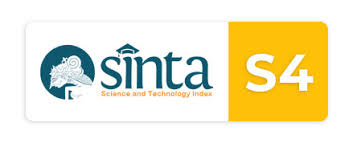PENGEMBANGAN AIR TANAH BERKELANJUTAN KAWASAN EKSPLORASI MIGAS STUDI: SEMBURAN LUMPUR MENGANDUNG MIGAS DI MASINLULIK, ATAMBUA, NUSA TENGGARA TIMUR (The Development of Sustainable Groundwater Oil & Gas Exploration Area Study: The Mud Volcano with Oil & Gas Seepage Masinlulik, Atambua, Nusa Tenggara Timur)
DOI:
https://doi.org/10.29017/LPMGB.51.2.19Kata Kunci:
airtanah, kawasan eksplorasi migas, nusa tenggara timur. (groundwater, oil & gas exploration area, nusa tenggara timur)Abstrak
Keberadaan semburan lumpur (mud volcano), rembesan minyak dan gas bumi (oil and gas seepage) menjadi data geosains penting pada wilayah eksplorasi migas. Selama ini dirasakan masyarakat adanya semburan lumpur dan rembesan migas tersebut tidak bermanfaat bagi daerah dan masyarakat sekitar lokasi semburan lumpur. Dengan penelitian ini untuk memberikan kontribusi dan menjadi lebih bermanfaat, khususnya untuk konservasi airtanah berkelanjutan. Karakteristik rembesan migas dan airtanah di lokasi terpilih yaitu Masinlulik 2, memiliki komposisi Methane (C1H4): 50.43% dan Nitrogen (N2): 49.57%. Hasil ekstrak lumpur yang keluar dari bawah permukaan tanah menunjukkan airtanah tidak berbau, tidak berasa, tidak berwarna, dan tidak ada kandunganvH2S, menjadikan lokasi tersebut tidak berbahaya bagi manusia. Analisis laboratorium lingkungan menunjukkan kandungan Zat Padat Terlarut yang tinggi sebesar 15.280 mg/l. Parameter kimia menunjukkan kandungan Arsen,Besi, Kadmium, Mangan, dan Seng di bawah ambang batas baku mutu sebagai persyaratan kualitas air bersih. Analisis tumpang susun data citra satelit dan geosains, serta hasil analisis laboratorium airtanah sebagai air bersih,vmenunjukkan kawasan eksplorasi migas Atambua memiliki potensi airtanah. Dapat dilakukan pemetaan terinci airtanah untuk air bersih sekaligus upaya konservasi airtanah dan lingkungan.
The existence of the mud volcano, the oil and gas seepage become the important geoscience data in thevoil and gas exploration area. So far this is felt by the public, about the existence of the mudflow oil and seepage. They have no benefit for the regions and people around the location of the mudflow. There’s a good expectation for this research in having the contribute and more useful things, especially for the conservation of the sustainable groundwater. The characteristics of the oil and the groundwater seepage in the chosen area, Masinlulik 2. It contains the Methane (C1H4): 50.43% and Nitrogen (N2): 49.57%. The results of an extract of mud that out from under the land surface shows that the groundwater is odorless, tasteless, colorless, and has no obstetrician H2S. This fact means that the location is harmless to humans. The analysis of the environment laboratory shows the ingredients of high solid dissolved, that is 15.280 mg / l. The chemical parameter shows the contents of arsenic, iron, cadmium, manganese, and zinc under the threshold raw as a requirement of clean water quality. The analysis of flats image data satellites and geoscience, also the laboratory analysis result of the groundwater as clean water, shows the oil and gas exploration in Atambua, have the potential for having the groundwater. The detailed of groundwater mapping can be conducted as an effort in producing the clean water and also conducting the groundwater and the environment conservation.
Referensi
Audley-Charles, M.G., 1968. The Geology of Portuguese Timor, Geological Society of London
Memoir No. 4, London, pp. 1-76.
Barber, A.J., et al., 1986 “Mud Volcano, Shale Diapirs, Wrench Faults, and Melanges in Accretionary Complexes, Eastern Indonesia”. AAPG Bulletin, V. 70. No. 11 P. 1729-1741.
Davies, R. J., Swarbrick, R. E., Evans, R. J., and Huuse, M., 2007, Birth of a mud volcano:
East Java, 29 May 2006. GSA: v. 17, no. 2, doi: 10.1130/GSATO1702A.1.
Driscoll, Fletcher G., 1987, Groundwater and Wells, Second Edition, Johnson Division, St. Paul, Minnesota.
Farajat Mohammad A., Alsharifa Hind Mohammad, Abdullah Diabat, and Hassan Al Ibraheem, 2014, Developing a Land Suitability Index for Agricultural uses in Dry Lands from, Geologic Point of View Using GIS - a Case Study from Jordan, Indonesian Journal on Geoscience Vol. 2 No. 2 August 2015: 63-76.
Hadimulyono, Jonathan S., dkk., 2015, Inventarisasi Rembesan Migas Timor Barat, Pusat Penelitian dan Pengembangan Teknologi Minyak dan Gas Bumi “LEMIGAS” (Tidak Dipublikasikan).
Kementerian Kesehatan RI, 1990, Permenkes RI No. 416/MENKES/PER/IX/1990 – Persyaratan Kualitas Air Bersih.
Koesnama, dan Permana A.Kurnia, 2015, Sistem Minyak dan Gas Bumi di Cekungan Timor, Nusa Tenggara Timur. Jurnal Geologi dan Sumber daya Mineral, Volume 16 Nomor 1, Februari 2015.ISSN 0853-9634.
LEMIGAS, 2015, Kemitraan Strategis Pengembangan Migas Kawasan Timur Indonesia, Badan Penelitian dan Pengembangan ESDM - Universitas Nusa Cendana, Hari Nusantara di Kupang, 21 Agustus 2015.
Massinai, MA., 2013, Pengkajian Citra Penginderaan Jauh Dalam Fenomena Geologi Di Gunung Bawakaraeng, SEMINAR NASIONAL 2 nd Lontar Physics Forum 2013, LPF1344, ISBN:978-602- 8047-80-7
Oktariadi, Oki., 2007, Perubahan Kemampuan Meresapkan Air Wilayah Jabodetabek-Punjur, Buletin Geologi Tata Lingkungan, Vol.17 No. 1, April 2007, ISSN 1410 - 1696.
Pena, S.A., Abdelsalam, M.G. 2006. Orbital Remote Sensing for Geological Mapping in Southern Tunisia: Implication for Oil and Gas Exploration. Jurnal. Journal of African Earth Sciences 44 (2006) 203-219.
Pusat Survei Geologi, 2011, Geologi untuk Perlindungan dan Kesejahteraan Masyarakat, http://psg.bgl.esdm.go.id.
Risdianto, R.K., David V. Mamengko, dan Eko Budi Lelono, 2015, Identifikasi Rembesan Lumpur (Mud Volcano/Diapir) Menggunakan Band Thermal Landsat TM 8 Daerah Memberamo Raya dan Sekitarnya, Prosiding Konferensi Teknologi Minyak dan Gas Bumi, Diskusi Ilmiah XII LEMIGAS, 10-11 Juni 2015, ISBN: 978-979- 8218-34-7.
SKK Migas, 2016, Memangkas Izin Menuai Efisiensi, Buletin SKK migas BUMI, # 37, Juni 2016).
Sunarjanto., D. dkk., 2015, P e n g e m b a n g a n Wilayah Semburan Lumpur Untuk Kutub Pertumbuhan Bisnis dan Perekonomian Daerah, Prosiding Nasional Semnas Tekno Altek 2015, L I P I , C i b i n o n g , 1 2 - 1 3 November 2015.











